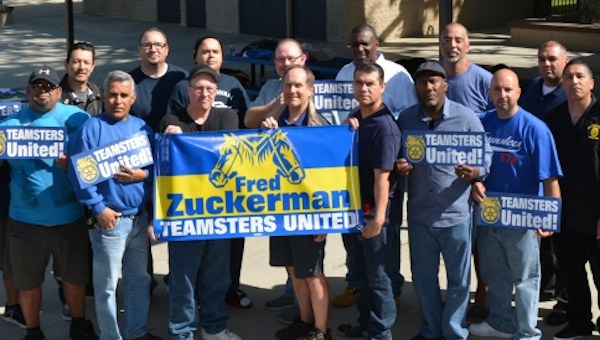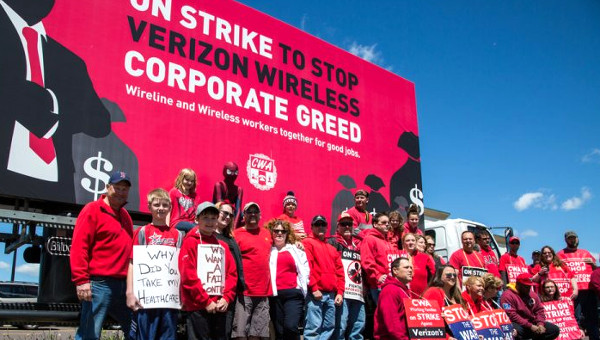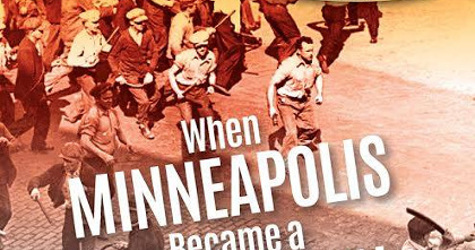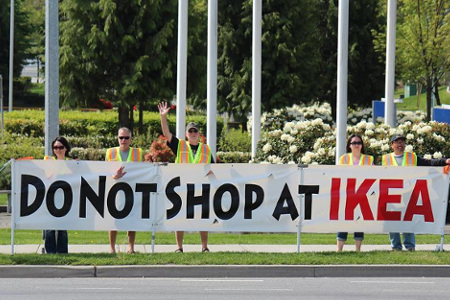A Missed Opportunity? A Closer Look at the Teamster-UPS Agreement
There is a debilitating tendency on the Left to instantly judge bargaining settlements as either sellouts or breakthroughs. But neither the cynicism nor the cheerleading gets us very far in grasping the actual significance of these agreements.
Sober assessments pivot on the relative weights given to context, material gains, building the union, and contributing to broader working-class consciousness and organization. But even here, there are differences that extend beyond ‘the facts’. More often than not, disagreements reflect underlying divergences in political perspectives and goals. Making these transparent is crucial to moving forward.
Measured in conventional union terms, the Teamsters-UPS contract seems a clear Teamster victory. Backed by the threat to strike, the union pretty much achieved the goals it set out at the start of bargaining: no new concessions, some limits on overtime work, throwing out a two-tier structure accepted in the last agreement, and impressive wage increases of $7.50 an hour over five years across the board, with $2.75 of that coming in the first year.
UPS also agreed to alleviate excessive heat conditions in trucks by phasing in air-conditioning as trucks are replaced, to eliminate the use of driver-facing cameras for surveillance, and to create 7,500 more full-time job opportunities for part-time workers (and fulfill 22,500 full-time job openings overall). That the union achieved all this and more without having to make the sacrifices involved in a strike can, from an individual workers’ perspective, be taken as an added plus.
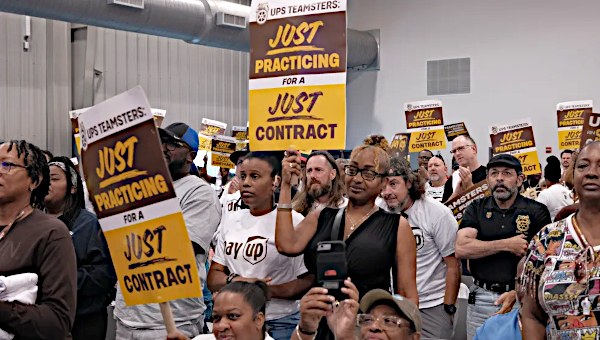
The Teamsters quickly declared the agreement “historic,” and the broad left quite generally concurred. Notably, the Teamsters for a Democratic Union (TDU), the longtime militant opposition in the union, hailed the agreement. Ditto Labor Notes, prominent since the late 1970s in the rank-and-file struggles for internal democracy and militancy, and influential in the development of TDU. Jacobin’s coverage has also been generally supportive of the agreement, though a thoughtful article by Barry Eidlin raised important qualifications. (In the Nation, Jane McAlevey labeled the agreement a “victory” but moved on to raise larger questions posed by the settlement.)
“Historic” union victories rarely occur without testing the bosses on a matter of principle through a protracted withdrawal of labor. The agreement clearly includes significant gains, especially in monetary terms, and it is no surprise that members voted to ratify the contract, with an 86 percent yes vote. But the Left’s conspicuous and generally unreserved enthusiasm for the agreement – very few exceptions aside – merits serious questioning.
Looking Closer at the Agreement
Against the excited headlines about “ending two-tiers,” the reprehensible secondary status for part-time workers – generally the “inside” workers in the warehouses and a majority of the union members at UPS – remains firmly in place, and the promise of more full-time jobs is little more than a paper commitment. Also, warehouse workers saw little or no attention paid to their working conditions. How then do supporters of democracy and militancy so readily accept a settlement, resolved without a strike, that limits workers’ active resistance for five years?
The Normalization of Part-Timer Status
At the beginning of the 1960s, Jimmy Hoffa’s Teamsters accepted the creation of a new category of workers: part-timers. Until 1982, part-time warehouse workers received the same wages as full-time drivers, but in the early 1980s the wages of the part-timers were slashed and the gap between them and full-timers steadily increased. This expansion of the proportion of part-timers with their dramatically lower wages became a core part of the competitive strategy of UPS.
In 1997, the then-reform-led Teamsters went on strike in large part to challenge this creation of a second class of workers among their members. According to polls, the strike – popularly seen as a reaction to the national growth in precarious labor – was supported by the public at a ratio of two to one.
Today part-timers are a majority – 60 percent – of the Teamsters membership at UPS. Five years from now, the hourly rate for most part-timers will still be only slightly more than half the top rate for full-time drivers ($26.25 for a part-timer with less than ten years vs $49 top rate for the drivers). Based on research commissioned by TDU, even if inflation was kept at 2 percent per year over the life of the agreement, many part-timers will still be earning less in purchasing power in 2028 than they did in 1982, a span of forty-six years. Moreover, the agreement includes an entirely new tier among part-timers themselves, with new hires starting at $21 an hour and reaching $23 by the end of the contract.
The Teamsters did end a tier introduced in the previous agreement. The Teamsters and UPS had worked out the creation of a new “hybrid” category that the union subsequently defended as a transition to full-time work; the now-infamous “22.4s” combined part-time warehouse work with some driving and provided an intermediate wage that fell between the part-time warehouse workers and full-time drivers. The full-time drivers saw this as the introduction of a lower-paid category that threatened to take more of their own work, and closing down this second-tier of part-time drivers was angrily demanded – and won – in the agreement.
But this came at the expense of a concerted focus on addressing the far larger part-time/full-time differential in wages. That the Teamsters set aside the move to close this gap at a moment when the union had such great leverage reveals the extent to which their inferior status has, sadly, been normalized. Defending this by pointing to the significant monetary gains the part-timers received misses a clear lesson of the labor movement of the past few decades: the decisive long-term solidarity costs of tolerating the creation of permanent secondary workers within and across workplaces.
More Full-Time Jobs?
The fight for increasing the number of job openings by reducing work hours for full-time workers – so prominent in the early building of the labor movement – has long been abandoned by organized labor. Without the reduced work-time demand, negotiating more full-time jobs is notoriously difficult. The classic example here is the promise, contract after contract since the end of the 1970s, of “job security” for United Auto Workers (UAW) members at the Big Three (General Motors, Ford, and Chrysler/Stellantis) in exchange for concessions. At the end of the day, the concessions accumulated, while UAW membership at the Big Three fell by a stunning 80 percent, from some 750,000 in 1978 to under 150,000 today.
Among other things, the number of full-time jobs is not entirely under the control of individual corporations but affected by broader factors like the state of the economy and competitive pressures. At UPS, the Teamsters won a corporate pledge in 1997 to create ten thousand new full-time jobs (two thousand a year over five years). This was given a high profile in the media, but only a fraction of these jobs materialized for part-timers (a fact less commented on by the same media). And when James P. Hoffa’s administration wrested back control of the Teamsters from reform leadership, it had little interest in trying to hold the company to its commitments.
In any case, promises of adding full-time jobs are easy to fudge. For one, in its 1997 “pledge,” the company “made clear that all proposed increases in full-time employment under the new agreement would be subject to growth in business.” More important, attrition alone would create more openings than the promised “new jobs.” But if the part-timers moving up were simply replaced with new part-timers, the ratio of part-time to full-time wouldn’t change (as it hasn’t over the past quarter century). Only negotiating a declining ratio of part-timers to full-timers can properly address more full-time jobs.
Some workers do want part-time work but opt for full-time only to access the higher hourly wages. If the pay differentials were significantly narrowed, this minority of workers might find part-time more acceptable, while the corporate incentive for hiring part-timers would be reduced.
Working Conditions
Talk to workers in any section of the labor movement, and the unifying theme is, and has been for some time, that of the intensifying pressures of work itself: speedup, stress, deterioration in health and safety, exhaustion, disrespect. Yet this is rarely on the bargaining agenda of unions or a cause for strike action. If anything, working conditions and basic dignity on the job have been traded off – under pressure of trying to maintain income – for wages and benefits (a trade-off that is central to characterizing “business unionism”).
The Teamsters did, to their credit, address the heat conditions in UPS trucks, even if this will have to wait for a turnover in trucks. But the question of workloads for drivers did not come up, and the production rates and health and safety of the predominantly part-time warehouse workers seems to have had no priority at all. This too reinforces a “two-tier” outlook.
Five Years of “Peace”
Corporations understandably dream of long-term agreements: by avoiding union strikes for a longer period, it promotes corporations’ treasured “stability.” In the 1980s and ’90s, corporations aggressively demanded, and got, longer contract durations. Ron Carey, the reform president of the Teamsters during the 1997 UPS strike, acknowledged that “the union made what he considered a major concession in that agreement – it accepted a five-year contract.”
The new contract continues the pattern of five years. During that period the company will be constantly restructuring work and increasing pressure on workers. The five-year period of “peace” in reality strengthens the ability of the capitalists to wage class war, while severely limiting the leverage of workers because of the no-strike clause in effect for the contract’s duration. A worker hired after this agreement is ratified and working at UPS for thirty years can expect to go through bargaining six times in his work life, with perhaps one or two of those culminating in a strike – hardly the kind of involvement that can build a fighting union.
This could be overcome by the continued building of the base through education, continuous local struggles (both legal and illegal), and involving the members in campaigns to spread unionization to nonunion companies, Amazon in particular. There are, however, good reasons for skepticism – starting with the length of the agreement as an indication of union intentions.
The Left’s Response to the Agreement
Some have claimed that more could have been won if the Teamsters were more democratic (less bureaucratized) and more militant (if they had gone on strike in spite of the offer). Opposing bureaucratization and supporting democracy and militancy are of course easy enough to endorse. Yet they don’t necessarily take us beyond the terrain of business unionism. Democracy alone, as we’ve seen, doesn’t prevent the widespread ratification of two-tier agreements. Similarly, the admirable militancy of the 1960s ultimately failed because it didn’t move on to press for the democratization of investment.
The Teamsters gave credit for their gains to their strike-readiness. Some militants argued that the union should still have gone on strike: If UPS offered the agreement it did without a strike, why not press for more? This misses the point; though the Teamsters did engage in significant organizing and may have been ready to strike for more money, they had not prepared their members to strike over the gaps raised in the previous section. This therefore wasn’t a challenge to business unionism, but its modification to a more militant version of what was still essentially business unionism – a response some Amazon comrades trying to unionize Amazon have dubbed “militant business unionism.” This may be better to some degree, but with continuing limits and new illusions.
This issue overlaps with the question of workers rejecting the agreement. A rejection would have served as a worker protest, but one of questionable practical and strategic effectiveness at this late point. It cannot override the actual achievements in the agreement, cut through the union and media fog about its limits, and overcome potential divisions. It was, for example, too late to suddenly get the full-timers on side now with a strike prioritizing the situation of the part-timers. That could only have been accomplished by making closing the part-time/full-time gap a long-term priority from the very beginning of the preparations for this bargaining round, along with the most intense education and organizing around this issue.
Calling for the rejection of the agreement could, consequently, only have focused on further wage increases for all, and this would be difficult to sustain. It is one thing to strike over matters of principle like refusing concessions or a monetary offer that lags inflation and other settlements. But it is quite another when it is too late to credibly launch a fight over principle, and the size of the wage package is comparatively good. In such circumstances, the demand for “more” comes up against the cold calculation of losing weekly pay for an uncertain period, to win what would at best likely only be marginal increases.

What of TDU’s role in this agreement? There was a moment in US labor history when democratization and stubborn resistance challenged the corporate-state determination to decisively weaken the labor movement. Groups like TDU fought back courageously and organized effectively, but they were not immune to the pressures and defeats around them. In that context of demoralization and lowered expectations, it is not all that surprising that TDU came to pin its hopes on the election of Sean O’Brien, a defector from the Hoffa caucus, as the new Teamster president.
O’Brien was a breath of fresh air after what Teamsters had been through. He offered TDU a chance to be more influential inside the union, and – in a bow to labor militants – went to the 2022 conference of Labor Notes and spoke aggressively, to wild cheers, about shutting corporations down and unionizing Amazon.
The problem was not TDU supporting O’Brien over the Hoffa-chosen candidate, especially since the group could not win on its own and running would split the progressive vote. Rather, the issue was that TDU gave up most of its independence in exchange for an influential role in the contract campaign. It was integrated into the O’Brien camp and – despite some independent organizing early in the campaign – became loyal in carrying out the limited bargaining program.
This meant praising the tentative agreement and tolerating the continued secondary status of part-timers in exchange for higher wages, not opposing the promise of full-time jobs even if members knew from the 1997 agreement that it was a sham, stepping back from an overall challenge on working conditions, and treating the duration of the agreement as a tactic rather than a strategy (i.e., treating the length of the contract as something to trade off for other gains rather than as a crucial factor in building the strength of the members.)
In its twenty-year retrospective on the 1997 Teamster-UPS confrontation, Labor Notes dubbed the strike “a showdown between union reformers and business unionism.” The 2023 tentative settlement raises the question of whether the former reformers are now – in spite of their impressive history – to be understood as promoting simply a militant variation of business unionism, with all its ultimate limits. The largely unqualified support on the Left for the Teamster agreement seems to reinforce this climbdown.
For Class-Struggle Unionism
To be genuinely effective, democracy and militancy – and insistence on strikes and “permanent class war” – need ideology, strategy, and structures to develop and manifest this orientation. A socialist perspective has a key role to play in developing this class-struggle orientation within unions.
The only development that can win lasting, transformative social change is a working class with the vision, understandings, capacities, and confidence to challenge not just employers, but capitalism itself. Building a fighting working class isn’t a matter of taking over unions and making them into socialist organizations, since union membership is not based on common politics but the happenstance of sharing a workplace and concern with self-defense and material gains. It is instead a matter of strengthening unions and moving them toward being more open to class struggle and radical critiques of the capitalist system.
This kind of transformation can in turn also strengthen movements for broader social change: e.g., turning unions into schools that introduce radical political ideas, seriously engaging union members in campaigns for universalist demands like health care and free education, and through all this developing more promising recruitment grounds for left-wing parties.
In light of the profound working-class defeats of recent decades, we are essentially starting at ground zero. How to bring more class struggle and a broader political vision into unions is an intimidating challenge. To take one example of the difficulty, adding specifically socialist goals to the existing mix of worker demands, like suggesting a strike to advance “class formation,” won’t get us very far.
How can we link concrete worker interests and specific tactics to advance our goals? How can workers be convinced that a broader, class struggle–oriented perspective will ultimately match or surpass the gains of militant business unionism? And who is going to bring this perspective to the unions in the first place?
We can make these rather abstract questions concrete by applying them to the Teamster agreement. Four elements seem crucial:
First, while the union leadership grasped that this was the moment to take UPS on, the priorities that leaders set and primarily campaigned on were disappointingly narrow. A socialist-inflected response would have more strongly prioritized the plight of part-timers and the pressures of working conditions from the very beginning of the bargaining campaign, or even earlier.
Second, a more radical set of priorities would have made UPS resistance and a strike inevitable. But whereas for O’Brien, as Eidlin noted, “a”strong settlement reached without a strike was his preferred outcome,” what this approach loses is the strategic potentials in building unions through strikes rooted in principled issues. As one UPS steward observed, “[Not striking] changes the pronouns from we as a union to you as a leadership.” Making change through disruptive collective action is a collective declaration that “[W]e did this. We fought for it. We won.”
Principled strikes are a critical catalyst for educating and activating the members (the measure of true democracy), raising expectations (a constituent part of militancy), developing new leaders, and demonstrating that smart bargaining may be effective in the right circumstances, but organizing the members is always the primary source of power (none of which excludes taking advantage of the openings offered by the current “right moment”). To be clear, this does not mean fetishizing strikes as something to always call for. But it does mean recognizing and acting on the fact that reversing trends in the labor movement is likely to demand far more than “smart bargaining.”
Third, since questions of the competitiveness of UPS came up, this could be used to stress the importance of moving toward industry-wide unionization and industry-wide bargaining to avoid some workers undercutting others. This would of course be difficult to raise if there is no struggle for equality going on within Teamster workplaces.
Fourth, TDU was, like many union oppositions, always vulnerable to short-term calculations. The point of an organized “outside” left is to act as a counter to such tendencies and help sustain militants by keeping the necessity of building class struggle up front – not as an abstract preference, but for the practical reason that in today’s context, only struggling as a class gives us any chance of meaningfully changing workers’ circumstances.
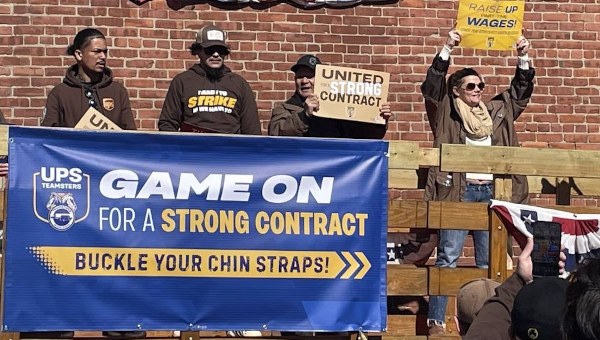
Impact of the Teamster-UPS Agreement on the Labor Movement
Within the Teamsters, the settlement reached will most likely consolidate the O’Brien leadership. It seems to have given TDU some internal space but at some cost of its independence and ability to play an oppositional role in pushing the leadership further. One question is whether a new generation of TDU activists inspired by the history of TDU – along with some of the old guard – will turn to questioning where the reform group is today.
Will the settlement spur a broader revival in labor militancy? The large wage increases may stimulate larger wage demands, but unlike the 1950s and ’60s, when a strong collective agreement in a key sector was likely to set a pattern elsewhere, that can no longer be confidently projected. The uneven restructuring of industries, the fragmentation of the working class, and the overall weakness of the union movement does not bode well for others following the Teamsters.
In the case of the UAW, the labor movement’s next major contract termination date and test (mid-September), the excitement of the wage package may stimulate autoworker expectations. And some may point to the Teamster victory in eliminating the 22.4s as a victory reinforcing the UAW priority of rejecting “two-tier.” But the unfortunate truth is that the Teamsters’ prioritizing wage demands over taking on the status of their part-timers tends to undermine the UAW leadership’s principled focus on ending its own two-tier system.
Moreover, since the Teamsters did not go on to strike to win the settlement, the argument can hardly be that if you are willing to strike and fight, you too can win. An equally credible argument is that the Teamsters had unique leverage and used it, but others may not have the same leverage. It is questionable as well whether wage gains are the key to reviving and strengthening the labor movement as opposed to the principled issues flagged above.
Will the Teamster settlement spur more unionization drives? Perhaps. The positive hype over for the agreement, many union supporters argue, can’t hurt. But this too is not to be taken for granted. Consider the Amazon workers. If they have been paying careful attention, they will have noticed that UPS part-time workers (who do work that is similar to Amazon warehouse workers) went into this agreement with wages generally below Amazon workers. The wage increase over the next five years might impress, but many Amazon workers may expect by then to be close to the $26.25 hourly wage that UPS warehouse workers with five to ten years’ seniority will be making (and ahead of the $23 per hour that new UPS warehouse workers will ultimately reach).
“The crisis in the labor movement is not primarily about union density but about the nature of unions today.”
But what Amazon workers might be especially sensitive to is the fact that the Teamster agreement did not demonstrate a solidaristic crusade to end the unequal treatment of low-paid workers. As for the issue that seems at least as important to Amazon workers – the oppressive production rates and repetitive strain injuries to backs, necks, and hands; the ruptured discs, muscle damage, and tendonitis – here too the Teamster agreement is hardly inspiring. Rather, the Teamster agreement tends to reinforce the long-standing union position of wages being the “compensation” for working conditions that can’t be substantially changed.
Some workers may also be impressed with the technical smarts of the Teamster negotiators and their ability to win high wage increases without a strike. But if that is the lesson, it is a bad one – nonunionized workers will, if they unionize, need to struggle and strike to come close to what the Teamsters have achieved over decades. If this lesson is not internalized, we will only end up reproducing the proven weaknesses in the labor movement.
The point is that the crisis in the labor movement is not primarily about union density but about the nature of unions today. It is worth noting that Canada has a union density rate two-and-a-half times that of the United States, but that is hardly expressed in dynamism of its labor movement. The larger question is therefore not so much whether Amazon workers will now flock to the Teamsters to improve their situation but whether, as Amazon workers take up the fight to democratize their workplaces, it will be these workers, through their stubbornness, determination, and creativity, who might contribute to reviving the labor movement.
This raises issues that go far beyond waving the Teamster agreement at Amazon workers. It raises the question of whether a transformation in the labor movement might begin with developing class support for the Amazon workers. Can the labor movement put competition for members aside and create a common solidarity fund to back the Amazon struggle? Will unions help recruit hundreds, if not thousands, of young workers from their own workplaces to go into Amazon plants (with a top-up to maintain their wages) to be trained as salts supporting organizing drives and learning the skills they can later bring back to their home unions?
Will unions invite Amazon workers into their locals to discuss mutual concerns and develop the kind of culture that can later support direct action alongside Amazon workers – railworkers ready to delay shipments to Amazon warehouses; machinists ready to slow down the loading of Amazon cargo shipments; postal workers and truck drivers ready to take longer lunch hours when needed to frustrate “instant” delivery? In other words, will organizing Amazon become a class project? And won’t that begin with transformations of our existing unions? •


